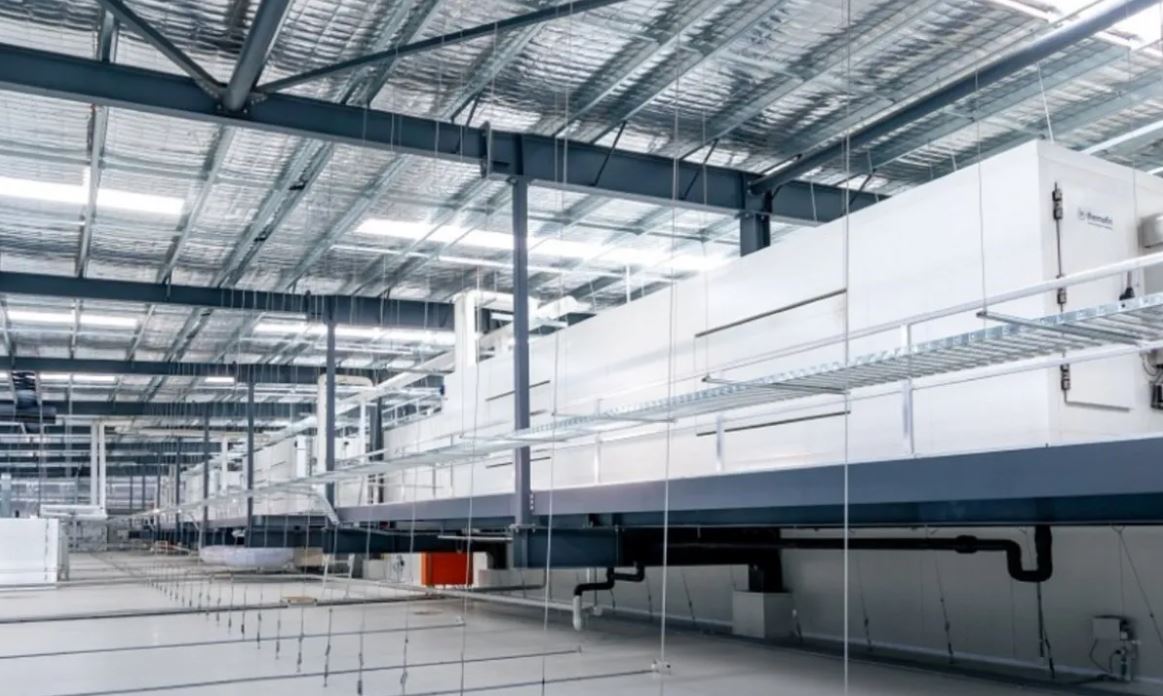Greater awareness needed on benefits of low-charge ammonia systems in Australia, says Scantec
July 29, 2022

“Awareness is very important” for the wider adoption of ammonia/NH3 (R717)-based industrial refrigeration in Australia, said Stefan Jensen, Managing Director at Scantec Refrigeration Technologies, an Australian industrial refrigeration system provider.
According to Jensen, low-charge ammonia-based industrial refrigeration, particularly dry expansion, can significantly reduce the energy consumption and operating costs of cold storage facilities compared to HFC-based systems.
Unfortunately, in his experience, “it’s hard to get the message across and be believed … even with energy performance data from 30 systems,” he said. Customers tend to think it’s too good to be true, he added.
Jensen delivered these remarks during his presentation at the State of the Industry – Australia and New Zealand online session on the second and final day of the ATMOsphere APAC Summit 2022 on June 28. The conference, which also took place in person in Tokyo on June 27, was organized by ATMOsphere, publisher of Ammonia21.com.
Energy and cost savings with low-charge ammonia
Completed a few years ago in Melbourne, the 60,000m3 (2.1 million ft3) cold storage facility features a low-charge ammonia plant with dry expansion and a “cold lake” air distribution system, all provided by Scantec.
The customer had previously operated three facilities with a total volume of 30,000m3 (1.05 million ft3), each using an HFC-based refrigeration system. The operator wanted to bring all three facilities under one roof and double its capacity. Having visited a number of Scantec’s low-charge ammonia installations in Brisbane, Australia, the client decided upon this approach for their new facility.
According to Jansen’s data, the new facility has a specific energy consumption (SEC) of around 20kWh/m3/year (0.6kWh/ft3/year) for storage. This goes up to around 50kWh/m3/year (1.4kWh/ft3/year) when blast freezing is included.
Annual electricity costs went from AU$900,000 (US$629,000/€617,000) for 30,000m3 of cold storage space to AU$260,000 (US$182,000/€178,000) for the new 60,000m3 facility, according to Jensen.
Of these savings, around AU$520,000 (US$364,000/€357,000) came from transitioning from HFC systems to the dry expansion ammonia plant, Jensen explained. An additional AU$120,000 (US$84,000/€82,000) in savings came from the installation of solar panels.
With the capital cost of the system around AU$3 million (US$2.1 million /€2.06 million), Jensen explained that the payback period based on annual energy savings from the refrigeration plant alone is just short of six years.
The system consists of insulated coolers (evaporators) installed in the ceiling cavity above the cold room, which makes for less intrusive maintenance and protects the stored goods from ammonia in the case of a leak. To avoid having ducting or evaporators within the refrigerated space, the customer opted for “cold lake” air distribution, which delivers cold air to the bottom of the cold room. The system also includes automatic ambient air defrost; desiccant drying to prevent slippery floors; and stainless-steel refrigerant piping, which has greater mechanical integrity.
According to Jensen, there is less than 25kg (55lbs) of ammonia in all of the evaporators combines and less than 500kg (1,100lbs) of ammonia in the whole system, which prevents the facility from being classified as a “dangerous good storage facility” in Australia.
Another example of high-performing low-charge ammonia is Scantec’s recent commission of a dry expansion system servicing the largest refrigerated warehouse in the southern hemisphere. During the first four days of operation after achieving the design room temperature, the SEC was recorded at 9.2kWh/m3/year (0.3kWh/ft3/year). Jensen noted that this is expected to improve over time as the ground underneath the facility cools.
Improving the adoption of ammonia
Despite the global transition to low-GWP refrigerants under the Kigali Amendment and the clear benefits of low-charge ammonia systems, Jensen notes that HFC consumption in Australia is still rising and is unlikely to change until “the HFC bubble bursts and people realize they can’t get HFCs anymore.”
While there are a number of factors at play, Jensen believes a lack of awareness is part of the problem when trying to convince cold storage facility operators to transition to the more efficient, dry expansion ammonia-based systems.
“It happens on occasion when you’re competing with or replacing an HFC-based system but if you’re trying to convince someone to replace an existing ammonia system with another ammonia plant that’s more efficient, this is very hard to do,” said Jensen.
For the latter, Jensen shared details about a project where the operator achieved a 30% reduction in energy use by switching from an ammonia liquid overfeed system to an ammonia dry expansion system.
One solution discussed by Jensen was the possibility of the National Australian Built Environment Rating System (NABERS) launching an energy-related star rating system for cold storage facilities, which he believes will increase awareness and could influence the way cold storage projects are being designed in Australia in the future.


